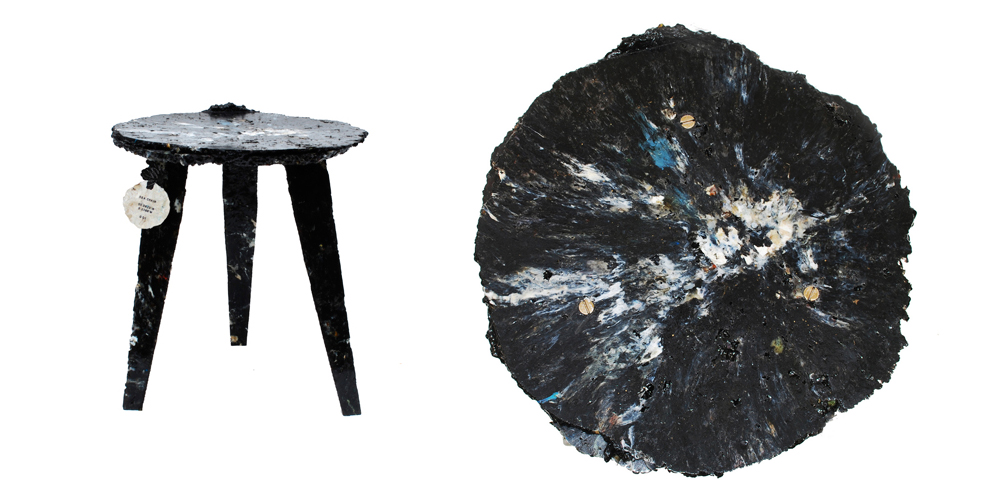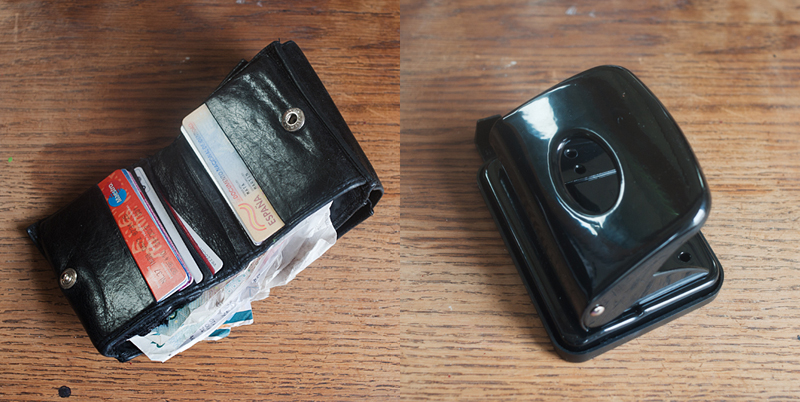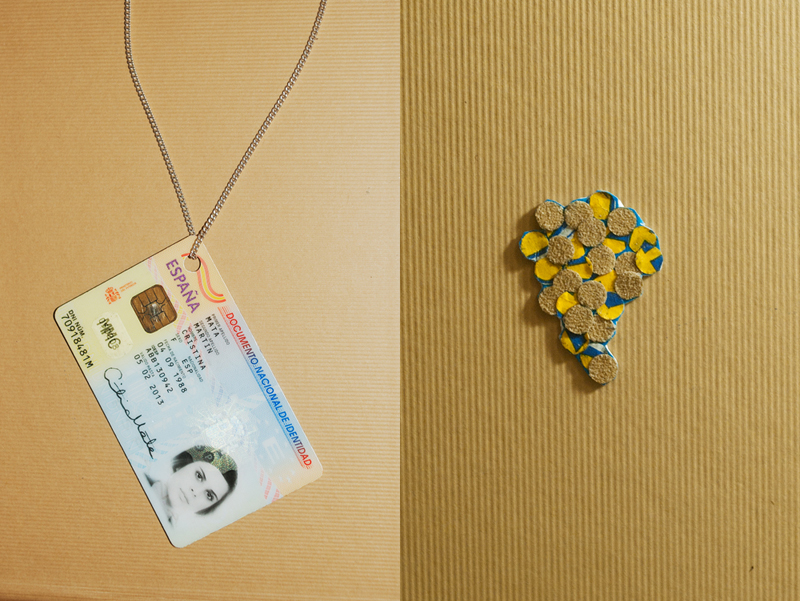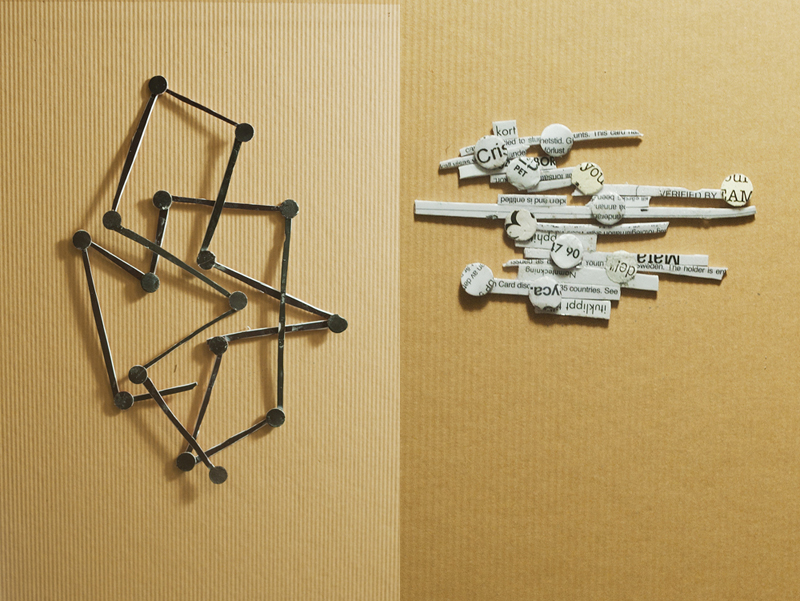“The Sea Chair”
When I first saw the Sea Chair I immediately reacted on the aesthetics – it’s imperfections, hints of craftsmanship, and it’s strange plastic molding. The plastic resembled, though not clearly, marble stone. Soon after I found out of it’s relation to the Great Pacific Patch [x].
The Great Pacific patch is a floating soup of plastic debris covering an area one and a half time the size of USA and is trapped in the currents of the North Pacific Gyre. Many organizations have tried to clean it but it has been deemed as “the worlds largest dump” – feared impossible to defeat.
The plastic debris releases chemical additives and plasticizers into the ocean and finds is way into the food we eat. The fishes and seabirds mistake the plastic for food, as you can see on the picture above showing a Laysan albatross chick (90 % of Laysan albatross chick carcasses and regurgitated stomach contents contain plastics.)
The Sea Chair is made of plastic debris collected from this garbage patch. It is part of a project with the same name lead by design duo Studio Swine, Azusa Murakami and Alexander Groves; in collaboration with Kieran Jones determined to clean this floating dump and lower the production of plastic
The overall concept is to design with sustainable systems while treating the aesthetics with the same importance. With the use of design they form the plastic waste into an aesthetically desirable object. They believe that desire is the factor for change.
The sea chair project uses craftsmanship, together with recycling and protection for the environment, as a part in the ecological cycle. Like a craftman the designer should follow the whole process of production. Studio Swine uses tools and created devices to collect and process the marine debris along the shoreline. The Nurdler is a machine, that was created while being inspired by the miners, sorting plastic from the other waste. The next step is in the Sea Press which is a furnace and hydraulic press that heats and molds the plastic into the stool.
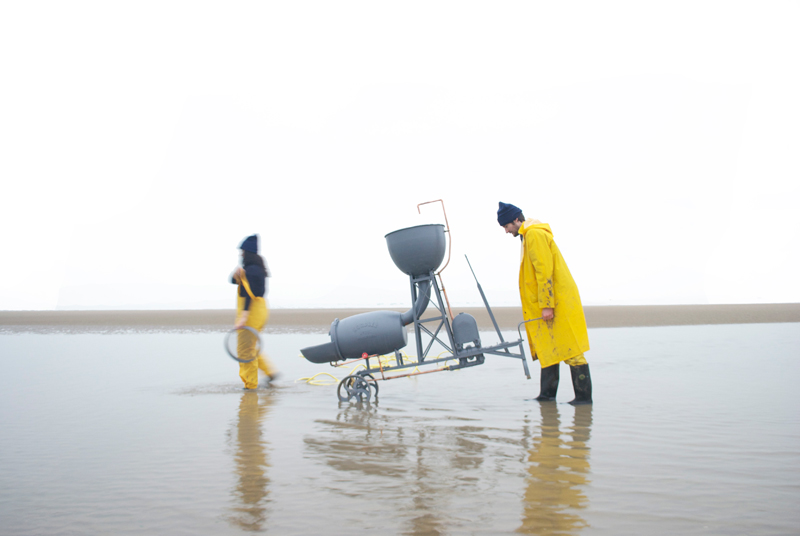
The Nurdler

The Sea Press
The stool is just the start in Studio Swine’s environmental cause. They also want to convert fishing boats into plastic refineries, so that the fishermen would collect plastic instead of fish. They mean that this would lead to lowering the demand for new plastics and therefore also the production of new plastic. Eventually this would also mean that the fisher men could continue fishing instead of picking plastic.
The connection between chairs and the seamen comes from a tradition amongst Britain’s port towns where sailors were required to have carpentry skills for repairing wooden ships at sea and after they retire many of them would continue to make wood furniture, in this case instead of wooden chairs the fishermen would make plastic chairs.
The Sea Chair proves that Eco-design goes hand in hand with craftsmanship and collectivity. Eco-design, since the 60’s, has questioned consumerism, taking inspiration from craftsmanship before the industrial revolution when eco-design was considered a norm and goods such as furniture tended to be made locally by craftsmen using local resources. Studio Swine follows the eco-design concepts of “Do-it-yourself” and engaging the community by making the production process accessible. On their website you can access a manual and video for how to build the devices and create the stool .
Though I desire one of those sea chairs, I’m not gonna be able to make one in this short amount of time. Instead I decided to make the smallest effort in creating from recycling waste material. I was going to empty my wallet from all the “shit” I gathered when I decided to use it as my “waste” material.
So I limited my self to this source material and one tool
I intended to make jewelery or at least functional objects but I’m not a designer so it resulted in something else…
